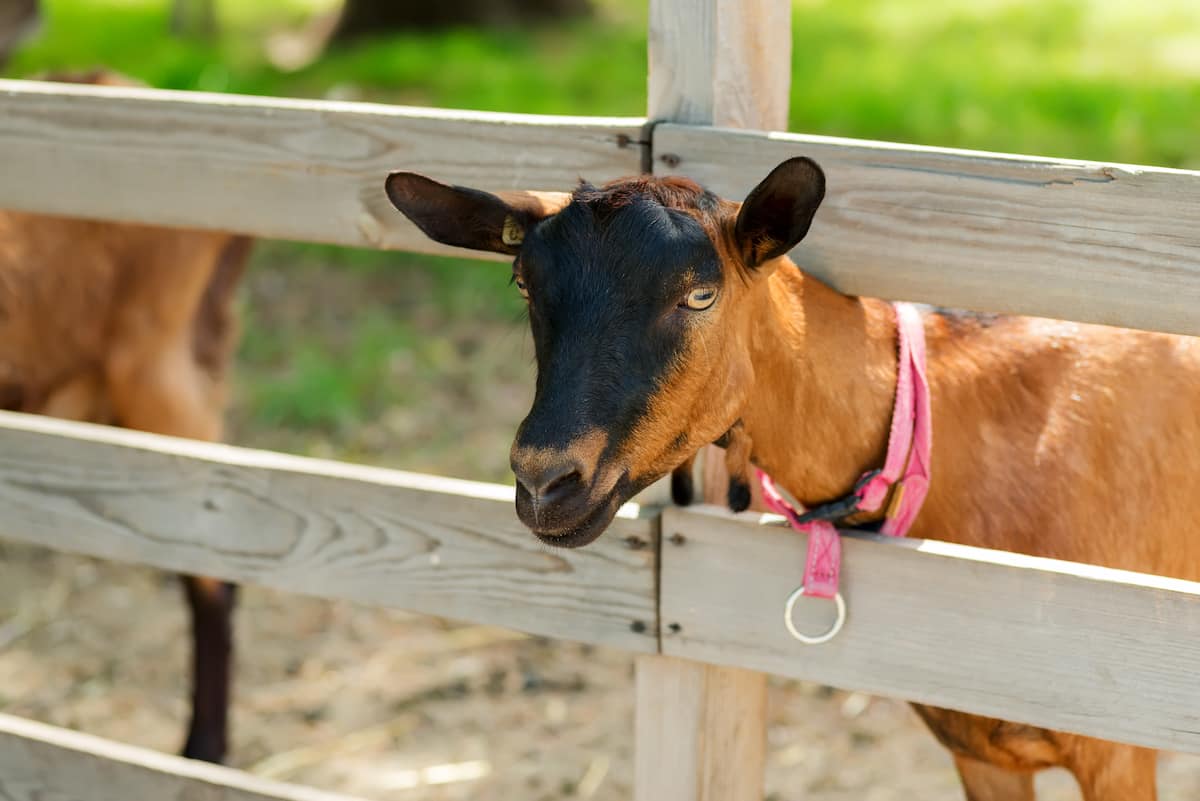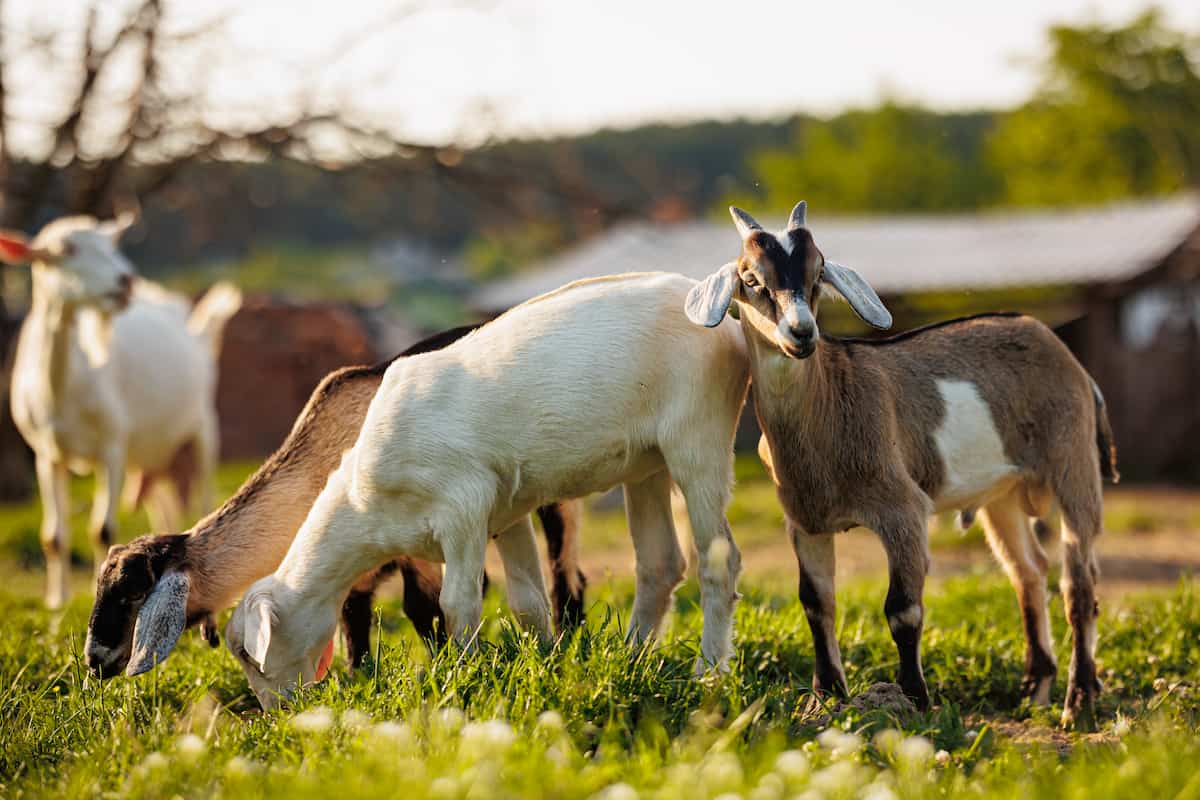Goat farming has become increasingly popular in recent years as more people look for ways to live sustainably, provide fresh and nutritious food for their families, and even earn some extra income. Raising goats can be a fun and rewarding hobby. Still, it’s crucial to understand what it takes to start and maintain a successful backyard goat farm. In this article, we’ll explore everything you need to know to start your own backyard goat farming business, from choosing the right breed to providing proper nutrition and care, backyard goat farming business plan and backyard goat farming guide.

Guide to Start Backyard Goat Farming
Understanding the Purpose of Your Goat Farm
Before you start your backyard goat farm, it’s essential to have a clear understanding of your goals. Goats can be raised for various purposes, including milk, meat, fiber, or as pets. Identifying your primary objective will help you select the appropriate breeds, housing, and care required for your animals.
Selecting the Right Goat Breed
- Dairy goats: Nubian, LaMancha, Alpine, Saanen, and Toggenburg are popular dairy goat breeds known for their high milk production.
- Meat goats: Boer, Kiko, and Spanish goats are well-suited for meat production due to their rapid growth rates and high-quality meat.
- Fiber goats: Angora and Cashmere goats are valued for their luxurious fibers in making clothing and textiles.
- Pet goats: Nigerian Dwarf and Pygmy goats are small, friendly breeds that make excellent pets.
Establishing Your Goat Farm Infrastructure
- Fencing: A secure and well-maintained fence is crucial to keep your goats contained and protected from predators. Use woven wire or electric fencing with a minimum height of four feet to deter goats from jumping over.
- Housing: Provide adequate shelter to protect your goats from harsh weather conditions. A simple barn or three-sided shed will suffice, ensuring proper ventilation, dry bedding, and enough space for each goat to prevent overcrowding.
- Feeding and water stations: Designate specific areas for feeding and watering your goats. Provide fresh water daily and ensure easy access to hay and other feed materials.
- Playground: Goats are intelligent and curious animals that require mental stimulation and exercise. Create a playground with ramps, platforms, and other structures for them to climb and explore.
Acquiring Your Goats
- Research reputable breeders or attend local goat shows and auctions to find healthy, high-quality animals.
- Choose goats that are free of visible health issues and have up-to-date vaccinations and deworming records.
- Start with a few goats to gain experience and gradually expand your herd as you become more comfortable with goat care.
Proper Nutrition and Feeding
- Provide high-quality hay or forage, making up at least 70% of their diet.
- Offer a commercial goat feed or grain mix to supplement nutrients not provided by hay.
- Ensure free access to a loose mineral mix specifically formulated for goats.
- Avoid overfeeding, as this can lead to obesity and other health issues.
In case you missed it: British Alpine Goat Facts: Origin, Physical Characteristics, Pros, and Cons

Goat Health and Routine Care
- Regular health checks: Check goats for lethargy, weight loss, coughing, diarrhoea, and nasal discharge. Observe abnormalities and consult a vet.
- Vaccinations: Keep your goats up-to-date on vaccinations to prevent common diseases like enterotoxemia, tetanus, and respiratory infections.
- Deworming: Follow a regular deworming schedule to protect your goats from internal parasites. Consult your veterinarian for a deworming protocol tailored to your region and herd.
- Hoof care: Trim your goats’ hooves every 4-8 weeks to prevent overgrowth, infections, and lameness. Learn proper trimming techniques or hire a professional to ensure proper hoof care.
- Grooming: Regular grooming helps maintain the health of your goats’ coats, especially for fiber breeds like Angoras and Cashmeres. Brush your goats as needed to prevent matting and remove debris.
Breeding and Kidding
- Goat reproduction: Goats are seasonal breeders, with most breeds coming into heat in the fall. Because the gestation period for goats is around 150 days, you will need to plan your breeding schedule accordingly.
- Selecting breeding stock: Choose healthy, high-quality animals with desirable traits to ensure the success of your breeding program.
- Kidding preparation: Prepare a clean, warm, and secluded area for your doe to give birth. Have a kidding kit on hand, including gloves, towels, disinfectant, and other essential supplies.
- Post-kidding care: Monitor the doe’s and her kids’ health, ensuring they receive proper nutrition and medical care as needed. Keep a close eye on newborns for signs of illness and intervene if necessary.
Milking and Dairy Goat Care
- Milking schedule: Milk your goats at least once or twice daily, preferably consistently, to maintain milk production.
- Sanitation: Maintain a clean milking environment and wash your hands, the goat’s udder, and all milking equipment before and after each milking session.
- Proper milking technique: Learn proper hand-milking techniques or invest in a milking machine to ensure efficient and gentle milk extraction.
- Storage and handling: Store milk in a clean, airtight container and refrigerate immediately to maintain quality and prevent spoilage.
Rotational Grazing and Pasture Management
- Divide your pasture into smaller sections and rotate your goats through each section, allowing the vegetation to recover before re-grazing.
- Monitor pasture growth and adjust grazing periods to maintain a consistent and nutritious forage supply.
- Test your soil and apply appropriate fertilizers, lime, or other amendments to maintain soil fertility and support healthy pasture growth.
Marketing and Selling Goat Products
- Research local regulations regarding the sale of goat products, such as milk, cheese, meat, or fiber.
- Develop a unique brand and packaging that highlights the quality and sustainability of your products.
- Utilize social media, farmer’s markets, and local events to promote your goat farm and engage with potential customers.
- Network with other goat farmers and industry professionals to share knowledge, resources, and opportunities.
In case you missed it: American Pygmy Goat Facts: Origin, Physical Characteristics, Pros, and Cons

Conclusion
Starting a backyard goat farm can be rewarding and fulfilling with proper planning, dedication, and ongoing care. By understanding your goals, selecting the right breeds, establishing a suitable infrastructure, and providing proper nutrition and care, you can create a thriving goat farm that supports your family, contributes to sustainable living, and even generates income.
- Feed Your Flock for Less: Top 10 Tips to Save on Chicken Feed
- Ultimate Guide to Ossabaw Island Hog: Breeding, Raising, Diet, and Care
- Hatching Answers: The Top 10 Reasons Your Chickens Aren’t Laying Eggs
- Eggs and Economics: Breaking Down the Cost of Raising Backyard Chickens
- Defend Your Greens: Proven Methods to Keep Iguanas Out of Your Garden
- Ultimate Guide to Cinnamon Queen Chicken: A Comprehensive Guide for Beginners
- Ultimate Guide to California Tan Chicken: Breeding, Raising, Diet, Egg-Production and Care
- Ultimate Guide to Marsh Daisy Chicken: Breeding, Raising, Diet, and Care
- 10 Types of Chicken Farming Businesses You Can Start for Profits